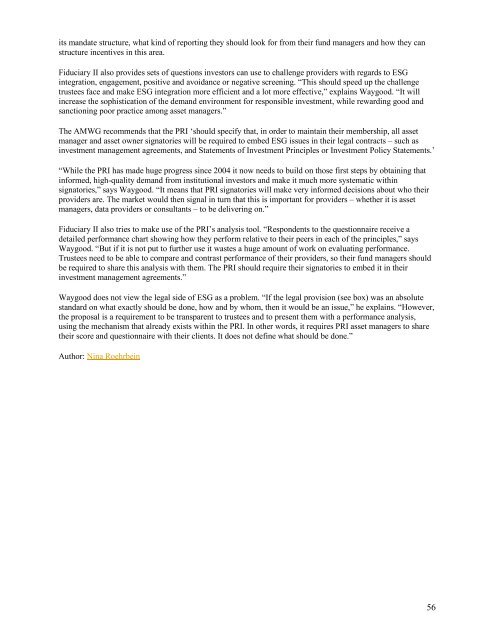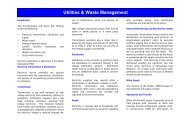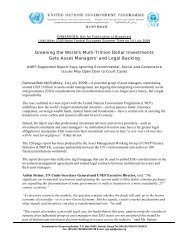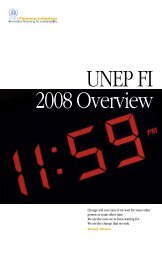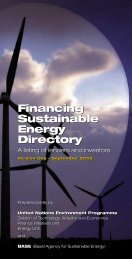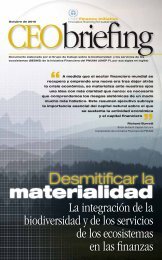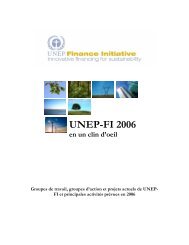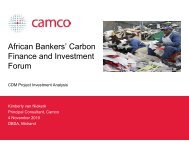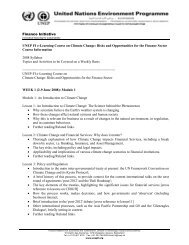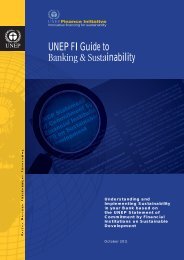UNEP FI Asset Management Working Group The - UNEP Finance ...
UNEP FI Asset Management Working Group The - UNEP Finance ...
UNEP FI Asset Management Working Group The - UNEP Finance ...
Create successful ePaper yourself
Turn your PDF publications into a flip-book with our unique Google optimized e-Paper software.
its mandate structure, what kind of reporting they should look for from their fund managers and how they can<br />
structure incentives in this area.<br />
Fiduciary II also provides sets of questions investors can use to challenge providers with regards to ESG<br />
integration, engagement, positive and avoidance or negative screening. “This should speed up the challenge<br />
trustees face and make ESG integration more efficient and a lot more effective,” explains Waygood. “It will<br />
increase the sophistication of the demand environment for responsible investment, while rewarding good and<br />
sanctioning poor practice among asset managers.”<br />
<strong>The</strong> AMWG recommends that the PRI ‘should specify that, in order to maintain their membership, all asset<br />
manager and asset owner signatories will be required to embed ESG issues in their legal contracts – such as<br />
investment management agreements, and Statements of Investment Principles or Investment Policy Statements.’<br />
“While the PRI has made huge progress since 2004 it now needs to build on those first steps by obtaining that<br />
informed, high-quality demand from institutional investors and make it much more systematic within<br />
signatories,” says Waygood. “It means that PRI signatories will make very informed decisions about who their<br />
providers are. <strong>The</strong> market would then signal in turn that this is important for providers – whether it is asset<br />
managers, data providers or consultants – to be delivering on.”<br />
Fiduciary II also tries to make use of the PRI’s analysis tool. “Respondents to the questionnaire receive a<br />
detailed performance chart showing how they perform relative to their peers in each of the principles,” says<br />
Waygood. “But if it is not put to further use it wastes a huge amount of work on evaluating performance.<br />
Trustees need to be able to compare and contrast performance of their providers, so their fund managers should<br />
be required to share this analysis with them. <strong>The</strong> PRI should require their signatories to embed it in their<br />
investment management agreements.”<br />
Waygood does not view the legal side of ESG as a problem. “If the legal provision (see box) was an absolute<br />
standard on what exactly should be done, how and by whom, then it would be an issue,” he explains. “However,<br />
the proposal is a requirement to be transparent to trustees and to present them with a performance analysis,<br />
using the mechanism that already exists within the PRI. In other words, it requires PRI asset managers to share<br />
their score and questionnaire with their clients. It does not define what should be done.”<br />
Author: Nina Roehrbein<br />
56


